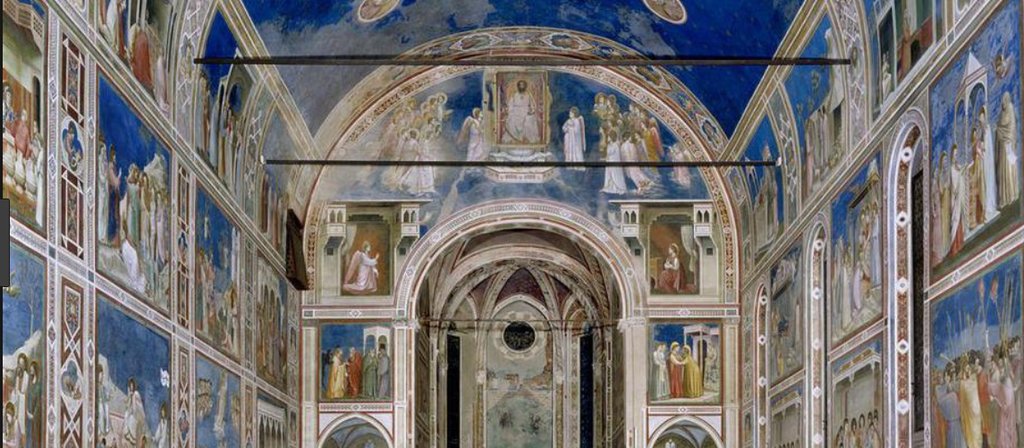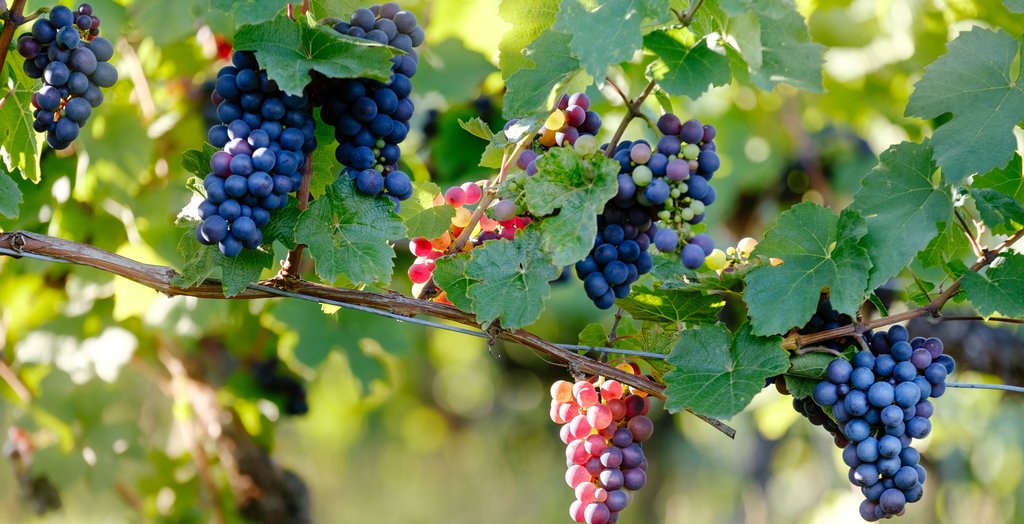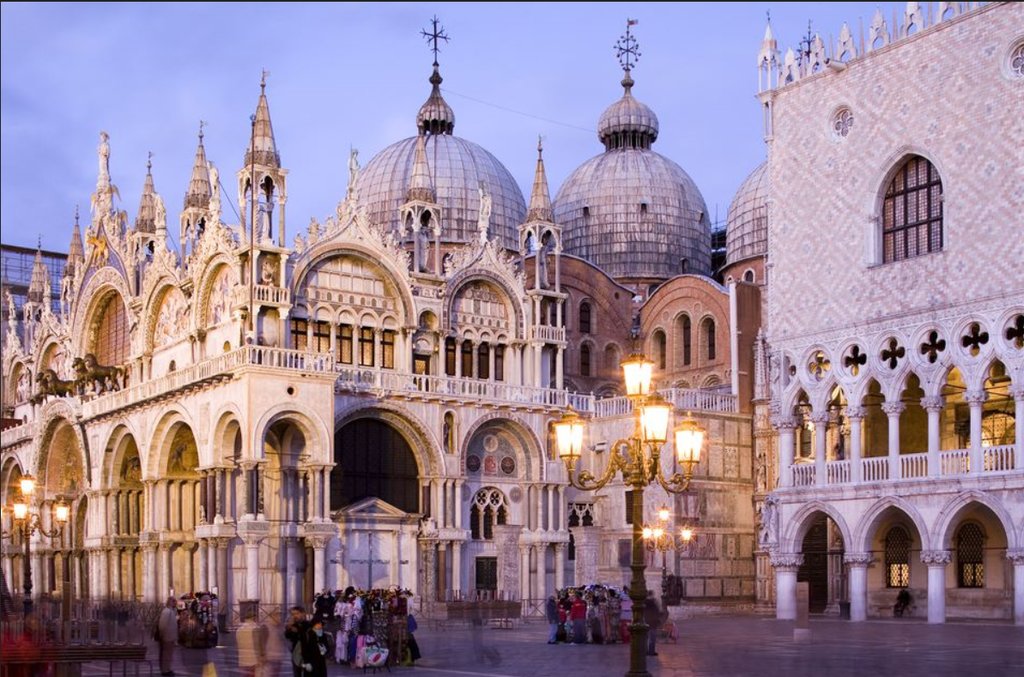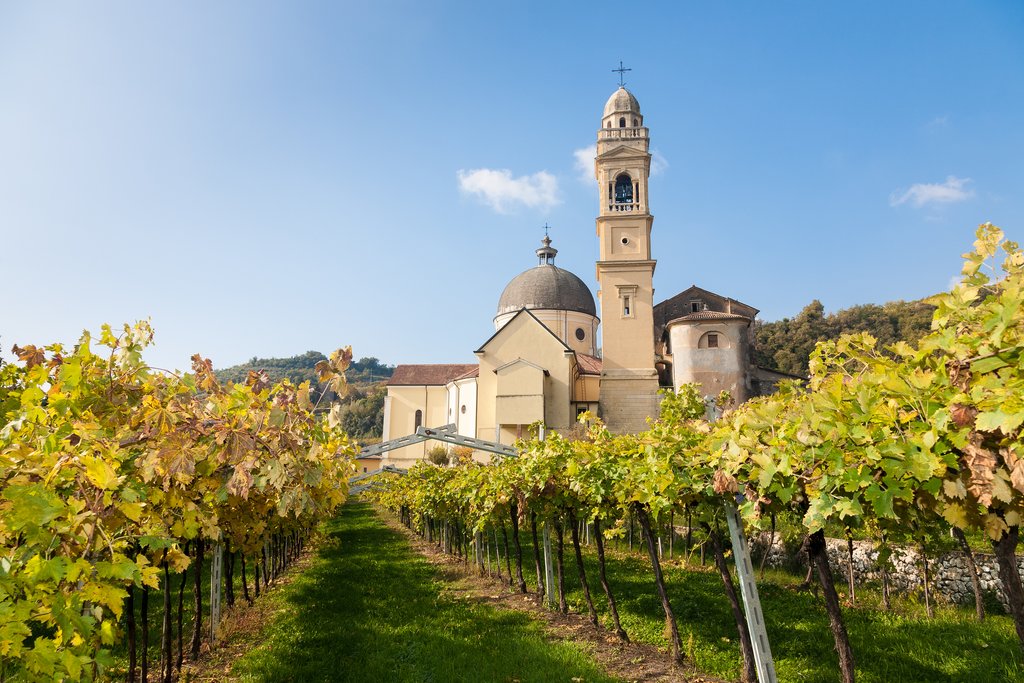Highlights
- Explore local cuisine on a wine & olives tasting tour from Padua
- Admire the romantic city of Verona and see Juliet’s balcony
- Try your hand at Italian cuisine during a half-day cooking class
- Admire Piazza San Marco, the Bridge of Sighs, & the Doge's Palace in Venice
Brief Itinerary
| Day | Highlights | Overnight |
|---|---|---|
| Day 1 | Arrive in Venice, Transfer to Verona | Verona |
| Day 2 | Guided Tour of Lake Garda from Verona | Verona |
| Day 3 | Cooking Class in Verona | Verona |
| Day 4 | Verona to Padua | Padua |
| Day 5 | Local Olive Oil & Wine Tasting from Padua | Padua |
| Day 6 | Padua to Treviso | Treviso |
| Day 7 | Self-Guided Day in Venice from Treviso | Treviso |
| Day 8 | Goodbye Italy |
Detailed Itinerary
Day 1: Arrive in Venice, Transfer to Verona

Welcome to Italy! Arriving at Venice's international airport, collect your bags and transfer to Verona. Trains depart from Venice's Mestre Station, and you'll arrive in Verona in around 1 hour 45 minutes. Sit back and enjoy the views as you get ready for a fantastic trip to Northern Italy. Make your way to your hotel, check in, and head out to explore Verona, the home of Shakespeare's most famous love story.
In addition to being the setting for Romeo and Juliet, Verona is rich in history and a UNESCO World Heritage site. Today, familiarize yourself with some of Verona's treasured monuments:
- Wander through the cobblestone streets and arrive at the central Piazza Bra, the largest square in the city. It is the perfect spot to admire the harmonious balance that exists in Verona between ancient and modern life, while sipping a delicious Italian cappuccino.
- See one of Verona's most notable landmarks, the Arena in Piazza Bra. Still used today, this ancient Roman amphitheater is one of the best-preserved of its kind.
- Visit the house that reputedly inspired the story of Romeo and Juliet, the Casa di Giulietta, and snap a photo of (or declare your love by) Juliet's famed balcony.
- Walk around the Old Town area, surrounded by Roman and medieval gates, toward the Piazza dei Signori. The square is surrounded by significant buildings and churches, and features a statue of Dante.
- Spend some time exploring the remains of ancient history inside the Archaeological Museum. The museum is located in the old convent of St. Gerolamo and exhibits a collection of mosaics, bronzes, statues, and ceramics found excavated all over Verona.
- Cross the Castelvecchio Bridge, constructed in the 1350s. You'll travel back in time as you walk over its red brick and take in the incredible scenery of the Adige river. As you reach the other side, you can visit the Castelvecchio Museum. This small castle, built for military purposes, is a lovely example of Gothic architecture.
In the evening, head to Piazza delle Erbe for dinner, relax with a glass of wine, and enjoy your beautiful new surroundings.
Day 2: Guided Tour of Lake Garda from Verona

Today, you'll spend the day on the southern side of Lake Garda. After a short 25-minute train ride, you'll arrive at Desenzano station and meet your guide in the center of town. Desenzano and Sirmione are somewhat larger than other villages around the lake, with vibrant bars and restaurants, but they are also steeped in history. Your guide will take you on a tour of these two villages on Lake Garda, hopping between them using the lake's ferry service. If you'd like to visit other villages with your guide, that can be arranged in advance. During your tour, admire how the landscape changes around the lake, noting that the south is much flatter and less mountainous than the north, but also beautiful.
Explore the lakefront, old port, and winding streets of Desenzano. Learn about ancient Roman history from your guide when visiting the castle and Roman Villa. If you're interested in delving even further back in time there is also the Bronze and Stone Age museum in Desenzano (the G Rambotti Museo Archeologico). Wander through the center and check out the variety of high-end designers to smaller boutique shops, and if you are there on a Tuesday don't miss out on the market.
On the boat ride to Sirmione, you'll notice that it juts into the lake on a long peninsula, making its location and views unique. Sirmione is a very pretty town, with colored houses and cobbled streets to charm you. The two main sites to see are the Grotto of Catullus and Scaliger Castle. The grotto is actually a large Roman mansion built for the poet Catullus. It was very common for rich families to construct their villas around the lakes as they were inspired by the tranquility of the water and Alpine nature. The 14th-century Scaliger Castle overlooks Sirmione and Lake Garda. For an unrivaled view across the lake, you can climb to the top of the castle up narrow stairs.
Towards the end of the day, enjoy some leisurely free time to explore at your own pace. We'd recommend finding a great spot for lunch in Sirmione's square Piazza Carducci or Piazza Cappalletti back in Desenzano, then hopping over to Peschiera del Garda, where you can choose from the following activities:
- Visit Roman archeological sites, the Palazzina Storica Museo, and the Sanctuary of Madonna del Frassino.
- Hike to see the Waterfall of Varone and, after, enjoy wine at Cantina Zeni and the Museum of Wine, inside the Zeni Winery overlooking Lake Garda.
- Enjoy nature in Peschiera at the Hruska Botanical Garden, where you can find species from every part of the world, from the Himalayas to Africa.
- Shop for, and sample, local food, and wine. Producers sell sweet and savory treats, including tortellini, formaggella di tremosine (a soft cheese), honey, and sbrisolona (a delicious crumble cake). Vineyards surround Lake Garda, producing Bardolino wine, grappa and limoncello.
After some last-minute shopping, take the train back to Verona. You'll return in time to sit outside and enjoy an aperitivo before dinner.
Day 3: Cooking Class in Verona

A trip to Italy wouldn't be complete without learning to make at least one homemade pasta dish. Today, be prepared to immerse yourself in Italian cuisine. You'll be in safe hands with a professional chef teaching you the secrets of traditional Italian cooking and authentic pasta making in Verona.
Discover how to make fresh pasta and risotto in this 3.5-hour practical cooking class. You'll be cooking in a unique location in Verona and have the chance to get to know others during the small group experience. You'll learn step-by-step how to make fresh pasta, and master the skills that go into creating a perfect risotto.
Once you've created your traditional dishes, your group will sit down to enjoy lunch together, guaranteed to be delicious. To accompany the food, you will taste local Valpolicella wine and round it off with the most famous of Italian desserts, tiramisu.
Later in the afternoon, you're free to relax as you'd like. We'd suggest finding a cozy coffee bar or taking the recently reopened cable car, Funicolare di Castel San Pietro. For the latter option, head to the Ponte Pietro, the historic arch bridge facing the San Giorgio in Braida Church. From there, ride on the cable car or venture up the stairs nearby to the Piazzale Castel San Pietro. There, you'll find a stunning view of Verona and a perfect place to watch the sun go down. This centuries-old fortress perched on a hilltop is an impressive architectural wonder in and of itself, but the view it provides of the city is what makes it so special.
Admire the church towers, river, and city skyline below before making your way back to the city center. Walk downhill and back across the Ponte Pietro bridge to dinner in the old part of Verona.
Chat with a local specialist who can help organize your trip.
Day 4: Verona to Padua

Wake up and enjoy your morning in Verona. Enjoy breakfast and pick up any last-minute souvenirs before transferring to Padua via a 1-hour train ride. Padova, or as its more commonly known by its English exonym, Padua, is one of the oldest cities in northern Italy. It was founded as early as 1183 BCE and features many romantic and ancient sights in its historic center. Sadly, Padua's attributes often get overlooked by that more famous of northern Italian cities, Venice. However, with most tourists staying in Venice, you'll have more of Padua to yourself. You'll arrive in Padua around lunch and, after checking in to your hotel, you're free to spend the rest of the day visiting the most famous sights on foot.
Padua has a long history of attracting great minds to the city. The University of Padua, the second oldest in Italy, is where Dante studied and Galileo served as a lecturer. The university still gives the city a vibrant atmosphere, with its ancient and medieval buildings treasured by locals. Padua is also known for the artistic masterpieces of Giotto (more information below) and boasts Europe's first botanical garden, where you can marvel at trees planted in the 16th century.
Giotto was a Tuscan Renaissance artist who created frescoes inside the Scrovegni Chapel, telling the life stories of the Virgin Mary and Jesus. The frescoes took Giotto years to complete, between 1303 and 1305. The design was very innovative, using bright colors and masterful detail to convey emotion and human nature. As this spectacular chapel is very popular, you must pre-book your ticket online and pick a convenient time slot for your visit. You'll receive a guided tour upon entering and have time to explore freely (tip: the Scrovegni Chapel is included with a Padova Card, a 48-hour ticket giving you free access to other museums, plus discounts on boat rides and other entrance fees).
One of the other iconic sights is the 13th-century Basilica di Sant'Antonio, which is also the burial site of the much-revered saint of the same name. Its many grand domes and mix of Romanesque, Gothic, and Byzantine architectural styles make this the crown jewel in a city with no shortage of jewels. Inside is the Anthonian Museum and more art by Giotto and Donatello.
In the late afternoon take a leisurely stroll from the Basilica towards the Prato della Valle square and you'll come across Orto Botanico. Spend some time wandering the beautiful botanical gardens in peace. After your visit, walk along the canal at the ornate Prato della Valle square. Sit close by the fountain and enjoy people watching. This square is also a great place to shop at the flea market which sells clothes, antiques, flowers, and locally-produced foods and has been here since the late 18th century.
For dinner, head out to a restaurant on the side streets around Piazza Duomo. The Paduan signatures are bigoli pasta served with ragu and Pasta e Fagioli (a hearty pasta and bean soup).
Day 5: Local Olive Oil & Wine Tasting from Padua

Today, you'll head out of the city and into the countryside, to the Regional Park of Colli Euganei. This half-day tour begins from the nearby town of Montegrotto Terme. Take a short 10-minute train ride from Padua and walk 5 minutes more to meet your guide. Then, drive out across the Euganean Hills to discover and taste what local producers are proudly making here, while learning about the significance of the area.
The Euganean Hills are around 12 miles from Padua, and are volcanic in origin. The soil is rich in minerals and nutrients, so it's the perfect place to grow crops. People have been farming on the hills since the Middle Ages. Each hill can have its own microclimate and so a wide variety of trees, plants, and flora grow well here. The region is famed for producing flavorful olive oil and wine due to its freshwater streams, elevation of approximately 1,000-2,000 feet (300-600 m), and exposure to the sun, in addition to its volcanic soil.
With your guide, you will visit a winery and olive oil mill, where you will have a tasting of a variety of products. During the tasting, you'll learn about how the natural landscape influences the taste of the grapes and olives. Typical regional wines from the Euganean Hills include Muscat, Prosecco, Merlot, and Cabernet Sauvignon. Look out over the hills, lined with vineyards and olive trees, and admire the beautiful scenery as you sample the extra virgin olive oil and wines. To accompany the tasting, you'll be served some local bread, cheese, and meat.
After taking a tour of the wine cellar, get ready to drive back to Montegrotto Terme. The tour is around 4 hours, so you will have the late afternoon to yourself once you return to Padua by train.
We recommend meandering to another charming square once back in the city, the Piazza delle Erbe in the heart of Padua. See the 12th-century Palazzo della Ragione, and the Via San Martino and Solferino, the medieval city's main streets. At the junction with Via Roma, stop to see the first of four large doors, above each of which is a marble plaque with a carved Lion of San Marco, the symbol of Venice.
Before dinner, enjoy an aperitivo in one of the main squares, such as Piazza della Frutta or Piazza Signori. You can also find a cozy restaurant for dinner if you wander down the narrow cobbled streets off the squares and follow the locals.
Day 6: Padua to Treviso

After a leisurely breakfast and hotel checkout, you will transfer by train to Treviso. This journey is only around an hour, so you have plenty of time to say goodbye to Padua. Located to the northeast of Venice, Treviso is a medium-sized city with similar charms including waterways and architecture, but with more tranquility than you can find in Venice itself. There are no huge crowds of tourists here. Check in to your hotel and head out to discover Treviso and its local life.
Due to damage sustained in World War II, Treviso's center had to be rebuilt but is now restored to its full glory. Treviso is a walled city, with medieval gates, cobblestone streets, and unique red brick-and-stone buildings. It is surrounded by two rivers, the Sile and the Cagnan, which can be seen side by side at Riviera Garibaldi (the Sile has noticeably calmer waters). Tiny canals run between houses. The city's ample waterways help keep the gardens green and parks looking their best.
We recommend walking around the city as well as the following activities to make the most of your day:
- Explore the city's well-preserved defensive walls and its canals. Wander across ornate iron bridges along the Buranelli canal toward the point where it joins the Sile River.
- Walk along the Via XX Settembre and into the main square and heart of Treviso, Piazza dei Signori. There are many nice cafés with outdoor terraces where you can stop to enjoy a coffee while admiring the historic architecture of Palazzo dei Trecento (the town hall). Tip: look out for the famous local bar and deli, Hostaria dai Naneti, in an alleyway just off this square.
- Go shopping along Via Calmaggiore, Treviso's main shopping street. The brand Benneton originates here and has a flagship store alongside designer boutiques and luxury vintage shops.
- Visit exhibitions at the Civic Museums of Treviso. The most impressive is the 14th-century Santa Caterina Church, beautifully restored and housing art and archeological collections.
- The Gallerie delle Prigioni and Casa dei Carraresi are two privately-owned galleries, of which the first is free to enter. In both, you can admire extensive collections of avant-garde and international pieces.
In the evening, good Veneto cuisine is easy to find in Treviso. Local osterias and trattorias serve hearty and delicious pasta and meat dishes. The streets off the Buranelli canal are recommended. Walk along Vicolo Trevisi and you're sure to discover a bustling place for a flavorful dinner.
Day 7: Self-Guided Day in Venice from Treviso

Take the day to explore all of Venice's many sights and sounds at your own pace. The train from Treviso Centrale takes around 40 minutes to reach Venice's Santa Lucia Station. We'd recommend starting at the center of it all in St Mark's Square, or Piazza San Marco. From the train station, you can follow the canal until the Rialto Bridge and then head straight to the square, known as the Piazza in Italian. Take a moment to breathe in the sights and sounds of this famed square before getting a deeper look inside its surrounding buildings and architecture.
Admire the impressive Saint Mark's Basilica from outside before venturing in. While admission is free, there is a skip-the-line ticket that can be purchased online to avoid lining up in busy months. Be sure to wear appropriate clothing when entering (no visible shoulders or knees). Marvel at the incredible mosaics that adorn the inside of the building. If you're up for it, you can climb the campanile, the bell tower of the Basilica, that lends incredible views! Here, we'd recommend buying tickets ahead of time online.
From here, turn your attention to the Doge's Palace, also located in St. Mark's Square. This almost 600-year-old building has served many purposes over the course of time and is an impressive symbol of Venetian history. Most notably, it was the home to the Doge, the ruler of Venice, and the center of government during the Venetian republic. Before entering for a visit of the incredibly lavish interior of the palace (buy your admission tickets online to save yourself time!), walk over to the Grand Canal side of the palace for a look at another iconic spot, the Bridge of Sighs. This ornate, Baroque-style bridge connected the palace with its first-floor prison and was used to transfer its prisoners.
Having seen the highlights of St. Mark's Square, it's time to make the 10-minute walk to Rialto Bridge. As you explore Venice on foot, you'll surely cross one of the four bridges that span the Grand Canal. The Rialto Bridge is the oldest and arguably most well-known. Linking the districts of San Marco with San Polo, the bridge gives amazing views of both sides of the canal.
A little further down along the Grand Canal you'll find the Rialto Market. This iconic food market is buzzing with local life and flavors. From fresh produce to arrays of seafood, it's a treat for the senses. Overlooking the canal, you can stroll around this lively epicenter of daily Venetian life and culture, seeing and tasting the local products that make up its incomparable cuisine. Note: the market shuts down around midday and is closed on Sundays and Mondays.
To round out your day, head to another of the four iconic bridges crossing the Grand Canal. The Ponte dell'Accademia. The vantage point from this bridge offers an incredible view of Venice and the canal it spans. Take a moment to admire this picture-perfect setting before heading to a nearby bar to finish off your day with a glass of wine and plates of cicchetti, the Venetian version of tapas. After you've had a full Venetian experience, return to Treviso via train ready for a rest at your hotel.
Day 8: Goodbye Italy

Your journey in Italy will end after breakfast, with a transfer to the airport to catch your flight home or to your next destination. Arrivederci!


